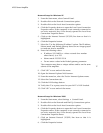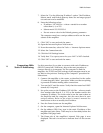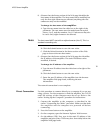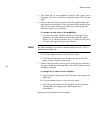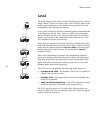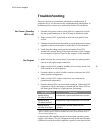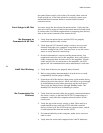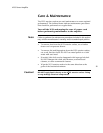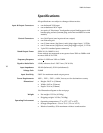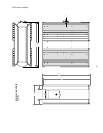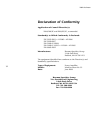
25
Nº53 Power Amplifier
Troubleshooting
Incorrect operation is sometimes mistaken for malfunction. If
problems occur, use this section for troubleshooting information. If
problems persist, contact your authorized Mark Levinson dealer.
No Power (Standby
LED is off)
1. Examine the power cord to ensure that it is connected to both
the rear panel connector of the Nº53 and an electrical outlet.
2. Make sure the Nº53 is powered on with the rear panel Power
switch.
3. Examine the electrical circuit breaker to ensure that power is being
supplied to the electrical outlet to which the Nº53 is connected.
4. Verify that the voltage rating on the rear panel of the Nº53
matches the voltage rating of the electrical outlet. If the voltages
do not match, no power is sent to the outputs of the amplifier.
No Output
1. Make sure that the source device is powered on, playing audio,
and set to the right output connector.
2. Make sure the Nº53 is not in Standby or Power Save mode. The
LED should be at full brightness.
3. Examine cables to ensure a solid connection between the Nº53
and associated components.
4. Make sure the Nº53 output connectors are connected to
operational loudspeakers.
5. Ensure that the Nº53 is not in a fault condition. When the Nº53
experiences a fault, the output is muted and the Status LED on
the front panel blinks in a rapid pattern, indicating:
*Signal-related faults include significant DC offset at the output due to either DC in the input
signal or a failed component within the amplifier OR excessive current demands due to a
short-circuited loudspeaker wire.
In fault mode, the amplifier output is muted and the main power
supply is shut down. The Nº53 remains in fault mode until the fault
condition is resolved and the amplifier is power-cycled (turn off the
LED Behavior Description
Rapidly blinking
(on most of the time)
Indicates that a power-related fault has occurred.
Rapidly blinking
(on half of the time)
Indicates that a signal-related fault* has occurred.
Rapidly blinking
(off most of the time)
Indicates that a thermal-related fault has
occurred.



